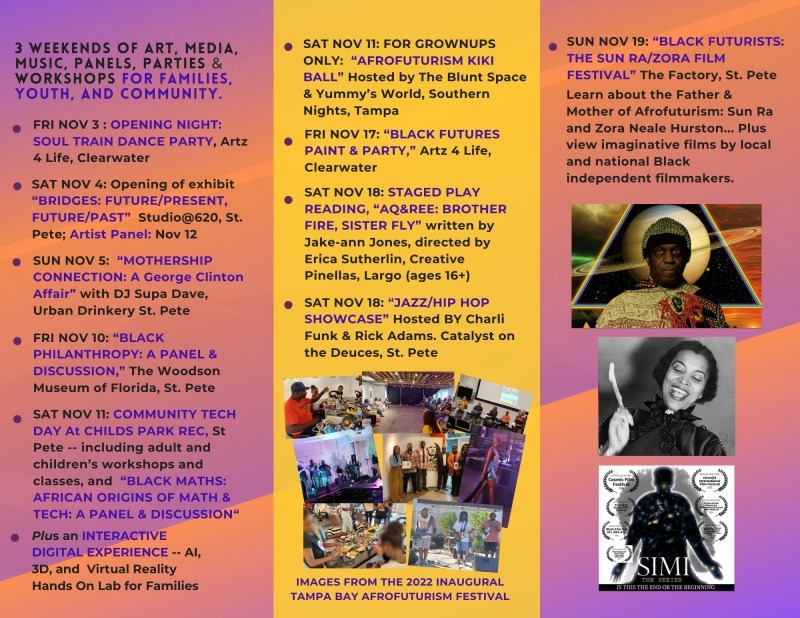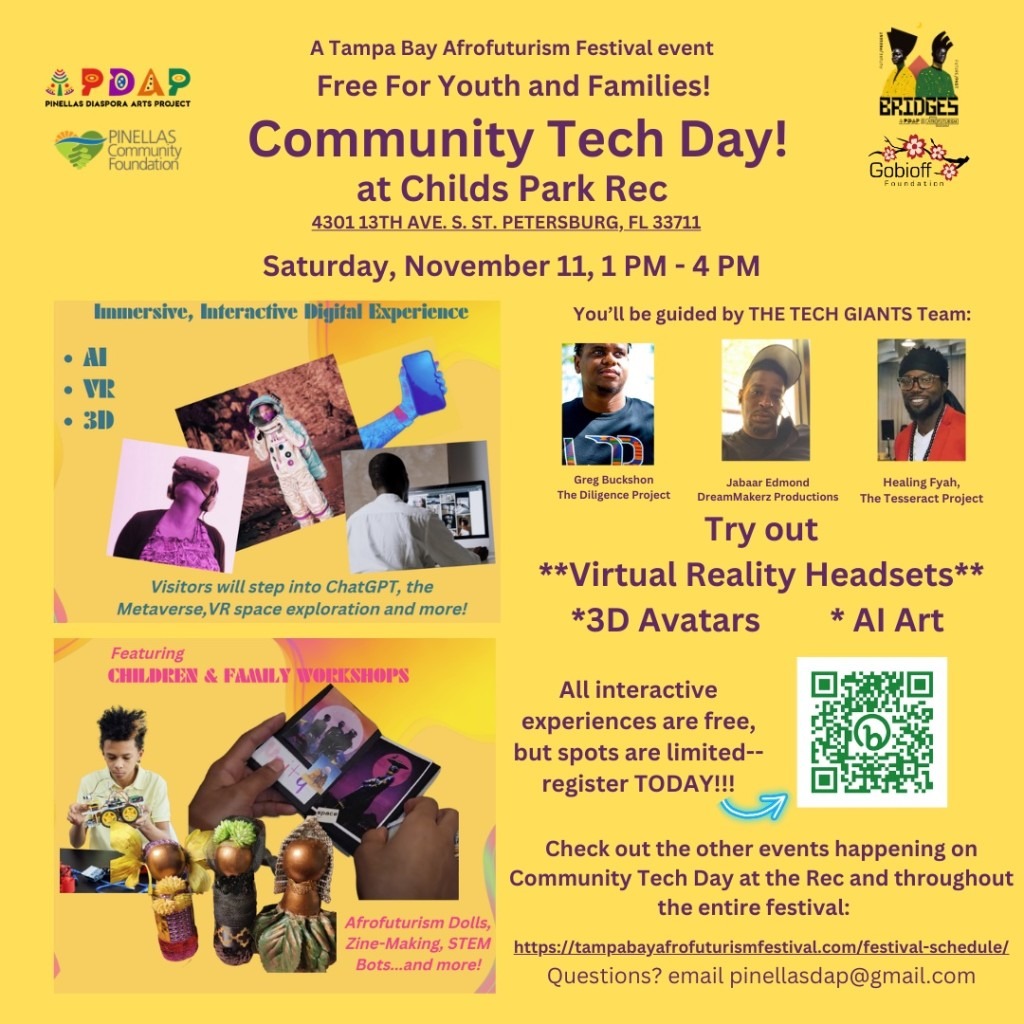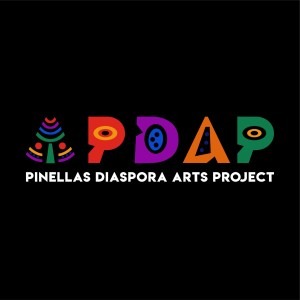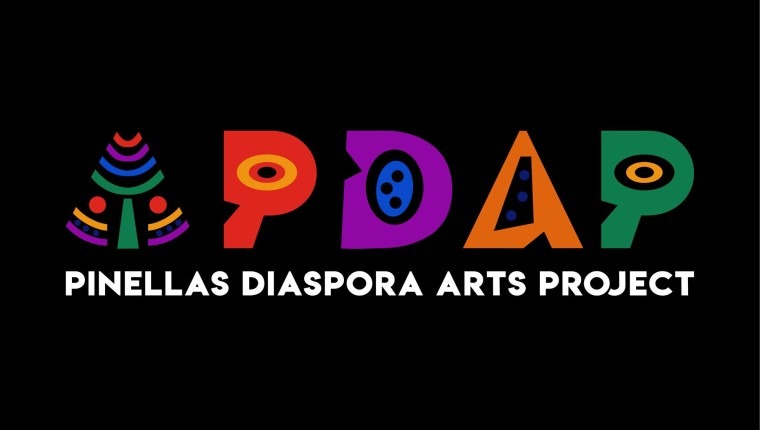Tampa Bay Afrofuturism Festival
November 3-19
St Pete, Clearwater
Tampa, Largo
Details here
I shared a conversation with creative members of the Pinellas Diaspora Arts Project, a Black and Brown organization in St. Petersburg who come to serve the neighborhoods with art, love and healing in mind.
This weekend begins the 2023 Tampa Bay Afrofuturism Festival, hosted by PDAP and exploring the theme of BRIDGES – Future/Present, Future/Past through three weekends of visual art, dance, music, math and tech, digital arts, theater and film. You can find the schedule here.
The Pinellas Diaspora Arts Project’s mission is “to support, encourage, and promote Black and Brown Arts and Artists in Tampa Bay while providing family engagements with a focus on health and wellness. Our vision is to build a community of Black and Brown creative producers, artists, and artivists, focused on developing and inspiring educational, collaborative and uplifting engagements for youth and families that encourage health and wellness.”
I spoke with PDAP board members Jake-ann Jones, Debbie Yati Garrett and Maranda Douglas.
I’ve witnessed many instances of discrimination in my life, including against myself and my best friend Aisha when we were in high school. We both are mixed, but I have indigenous Filipino (Ita/Aeta) blood from my mother’s side, and she is a beautiful Black woman. Being different was never easy, and it certainly was a struggle for everyone who came from very different backgrounds to feel loved and accepted back where we are from.
This transcript has been edited for readability.

Is the Pinellas Diaspora Arts Project in a fixed area in St. Pete, or is it more of a mobile thing?
Jake-ann Jones – Well, Pinellas Diaspora Arts Project is currently made up of eight board members. I live in Clearwater. Debbie lives in St. Pete. Artz 4 Life, run by our board VP Jai Hinson is in Clearwater. Bob Devin Jones, the president, lives in St. Pete. Jabaar Edmond, Tressalyn Morris and Eunice Park, our other board members, live in St. Pete. Maranda’s in upper Pinellas as well. We’re spread out all over the place.
What kinds of activities does PDAP host in the Black and Brown community?
Debbie Yati Garrett – Pinellas Diaspora Arts Project is also known as PDAP. We do have an active website and the website is a great tool if you want to see what programs and events we’ve done.
The most recent event that we put on was a Chalk Festival that was held in a historical Black area in St. Petersburg (The Deuces, in May).
Does PDAP tend to host activities in a certain way or is it more like – “If it’s art. We’ll do it. Whether it’s music or talking, it doesn’t matter what form it is, it’s just doing the work of art.”
Debbie Yati Garrett – Well, one of our mission statements is to elevate art, Black culture. And we are the result of the mission statement. We stay true to that.
Jake-ann Jones – We do art. The art encompasses all the traditional arts that we know. But it also can include carpentry as a form of artistry.
I look at art in a kind of a holistic way. Everybody probably comes with their own definition. We also do pop-up events. We’ve done movie nights, we’ve done conversations. And then Maranda does events for us in Clearwater.

Maranda Douglas – What I’ve been able to really focus on is uplifting the younger generation of Black and Brown artists and having a platform for them to be featured.
Last year with the Afrofuturism Festival, I hosted a painting party where we had a few different artists from different respects come and help out and be featured at the event. So that’s pretty much my focus. I’ve done a lot of uplifting of artists in the Clearwater area.
I feel like that the areas that I’ve been able to work in have been historically underserved – and the population as well has been historically underserved or overlooked. And so PDAP has been a platform of sorts to feature those artists and find more creative ways that we can continue to integrate with the community.
Especially with the African American community – everyone has a talent, but not everyone has a platform or an opportunity. And I feel PDAP provides that for the community.
PDAP’s been doing an awesome job at cultivating what [the Afrofuturism Festival] experience is going to be like. And what we really want at the end of the day, is for every artist of every color to feel appreciated, to learn something new – to find a new pathway to express themselves.

Jake-ann Jones – The other thing that we’re touching on is the educational part of our mission. That being largely about the children. We have a project called R.O.Y.A.L. (Reaching Our Youth Artist League), where we are putting some of our artists in locations with kids who may not get art.
We just did one (session) up in Tarpon Springs. We need to be throughout the county, because we are called Pinellas Diaspora Arts Project and the county is really more than St. Pete. And those are kids who need art, and locations that need art.
We’re putting artists with kids, which I think is one of the things that I think PDAP probably can do that some artists and promoters won’t do, is because we have people who come from different generations and different backgrounds. Our experiences with art are different and we can look at the niches that are kind of open and say – “Okay, what niche isn’t being touched?”
I asked Debbie to think about putting together a senior’s project for the Afrofuturism Festival – that we can start our work with seniors, because that’s another group that respond to art and may not get it.
Debbie Yati Garrett – We’re in the beginning stages of it. What we would like to do is recognize artists in the community in the Tampa Bay area who are over the age of 50, but I would like to call them ‘Movers and Shakers’ – especially because a lot of those people have been mentors, professors and teachers and artists in the community.
Because we have some really substantial artists in the community who are contributing and making a mark on cultural arts. There is a Black renaissance happening, and I think that if PDAP puts their foot in the door, we can be a really great part of seeing that take place, birthing it.
There are a lot of artists and students, not just at your college (USF), but at Eckerd College, who benefited from some of our Black art professors, and it’ll give them an opportunity to invite their students in and to see the actual growth of the community as far as cultural Black art is concerned.

Debbie Yati Garrett – St. Petersburg has gone through a transformation. And also, the surrounding counties. I mean, we have a lynching marker in this community.
Not too far from where I sit right now, there is a burial ground with concrete on it, on Tropicana Field. And we had a spiritual transformation.
As an artist, that’s when we tell our story – we have to include that into the work. We’re paying homage to our ancestors, those whose shoulders we stand on. Also, it helps to heal the community and spirituality is really important.
When most people don’t know that before the Chalk Festival even happened, we did a spiritual walkthrough of the street by blessing it with drums and prayers. And it creates a great energy. For me, I felt that energy throughout the whole event.
I think that I can’t even create without tapping into my spirituality.

Maranda Douglas – I just love words. And when I was trying to figure out what ‘Diaspora’ even meant, it brought me back to the dispersion of our African ancestry and how we were brought here – scattered all across the continent and across the Earth. And using this art project as a way to bring us all back together under the tone of art.
And it is a spiritual practice. That’s just what I think of when I think about “what is PDAP doing.” The spiritual component behind it is ingrained in the name – that this organization is really focused on bringing the artists, the art culture to a place where we can assimilate as Black and Brown people and appreciate each other in our own space, as well as share our story and expand the knowledge with the people.
Jake-ann Jones – Spirituality is a large part of my life. For me right now, the art project – and I work with an art project up in Clearwater, kids – I’m allowed to deal with my feelings about consciousness, God, the universe, whatever, through the creation of art. The invisible, the unseen, that is what the spiritual is.
And art is a way of manifesting the thoughts that are invisible. They’re inside us. We manifest them through our art.
Maranda Douglas – I don’t call myself an artist. I’m like a collaborator-slash-coordinator. But I always admired the artist’s capacity to just think of something and to manifest it like Jake just mentioned.
I think that’s like a skill that I’ve developed over time, but it’s not something that you’re born with. It’s something that you just have to tap into and trust.
I always admire that about the artist community and I hope that we can continue to be a platform to uplift more people in the same spirit.

Especially with how the world is, you’re going against the grain and this is a very strong thing to do. We need that. We really need that. And especially for the Black community right now, this is an epitome of – I imagine this big mother, protecting her young, protecting her people.
After this conversation, after re-introducing myself to author, anthropologist, filmmaker, folklorist and activist Zora Neale Hurston through the PDAP website, and after visiting Rico Gatson’s Art Exhibition at USF , I had a spiritual dream about Miss Hurston.
Folks, I can be honest here, I only skimmed through the article before going to the exhibition. And even afterwards, I did not read too much about her. I just knew basic information.
But I had a dream that I was in a university-like building – a preservation or museum-type place. Somewhere so special. I got on a kick scooter that I could not entirely control and arrived where she was at.
This led me to a room where Miss Zora was laying on a bed with people visiting her. She was deep asleep and everyone could see her up-close. I heard a voice from above saying – “It is time. Lo’ and behold, she awakes!”
Everyone, except for myself, was in total shock. I, on the other hand, was in the state of joy and started to become tearful. I whispered to Miss Zora as she looked at me, laying on her side on this comfortable-looking bed, “It’s you. . .”

She smiled at me and did not say a word. This is exactly what she looked like. All she did was let me know she knows me, and that she is well and alive, in the spirit.
Her visitation, I believe, had set me to keep my eyes on this journey. A journey of coming closer to the Black Community and knowing their lost history, and seeing how many are so alive and present with us here today.
Zora Neale Hurston is celebrated as the Mother of Afrofuturism,
creating work that reimagines, reinterprets and reclaims the past and present,
for a more empowering future for African Americans.
pinellasdiasporaartsproject.org
tampabayafrofuturismfestival.com
Tampa Bay Afrofuturism Festival
November 3-19
with events in St. Pete, Clearwater, Largo and Tampa
You can find the schedule here






